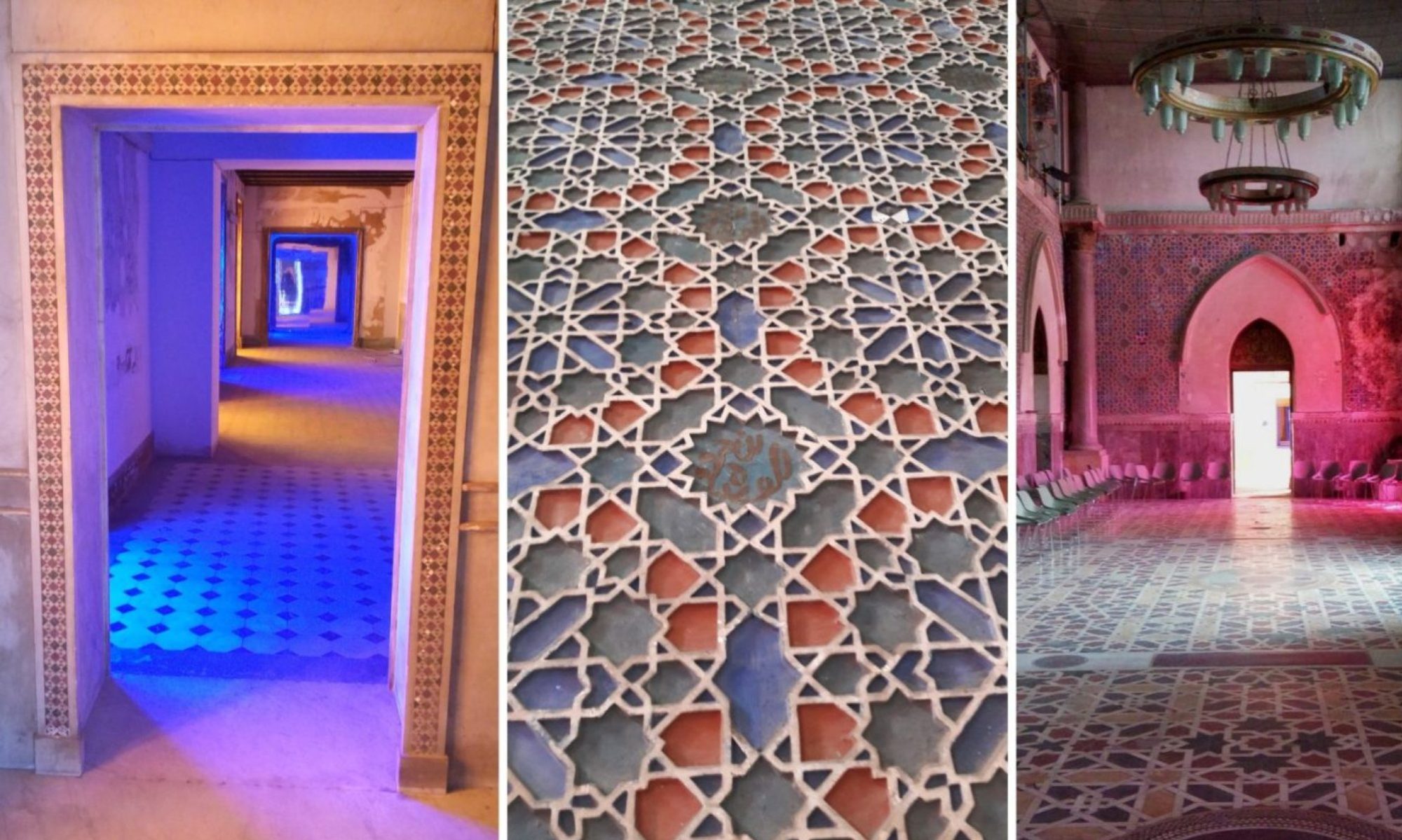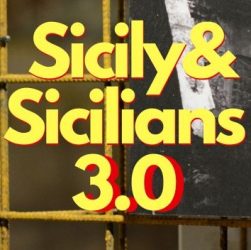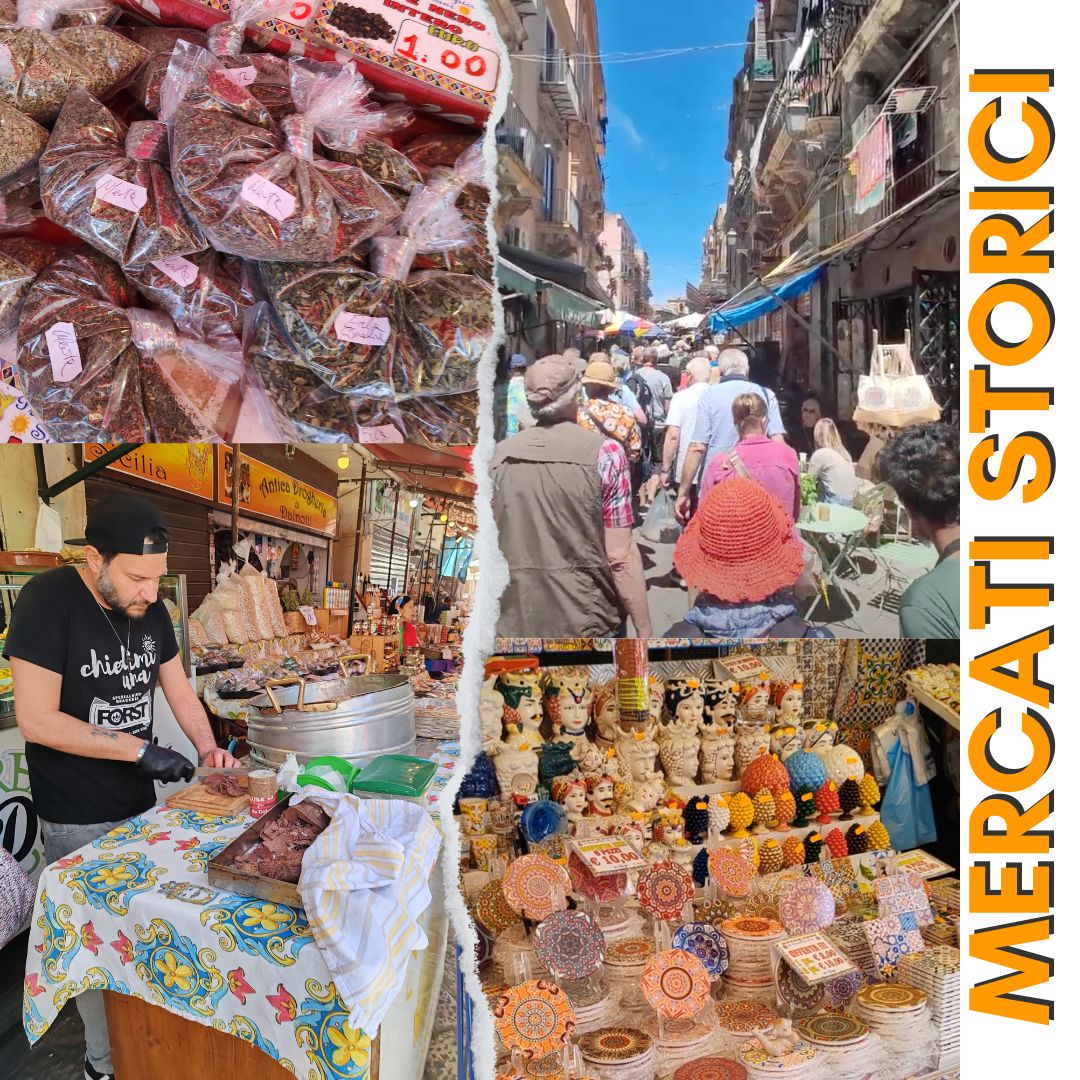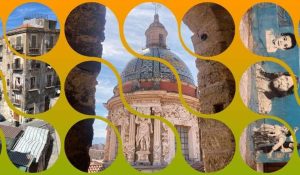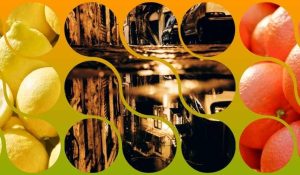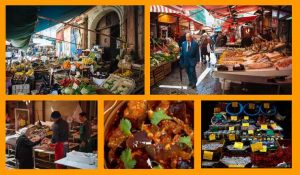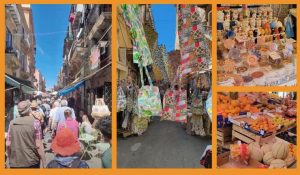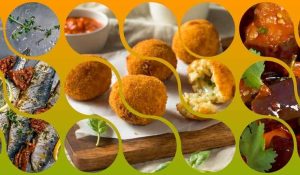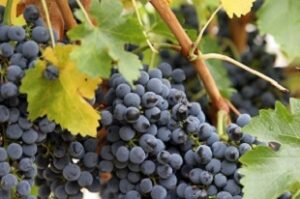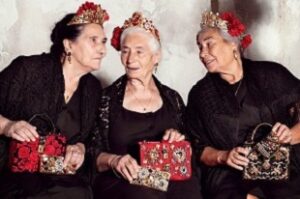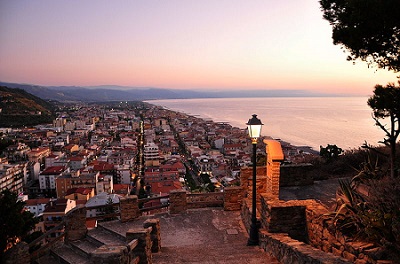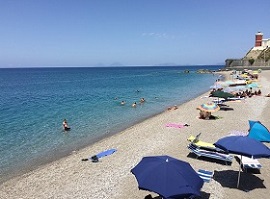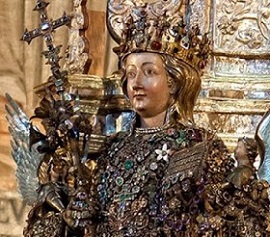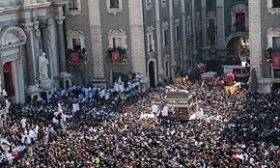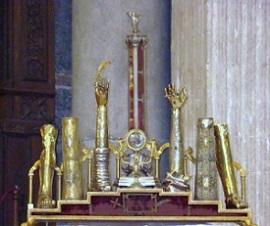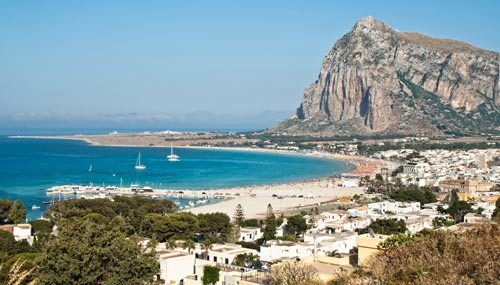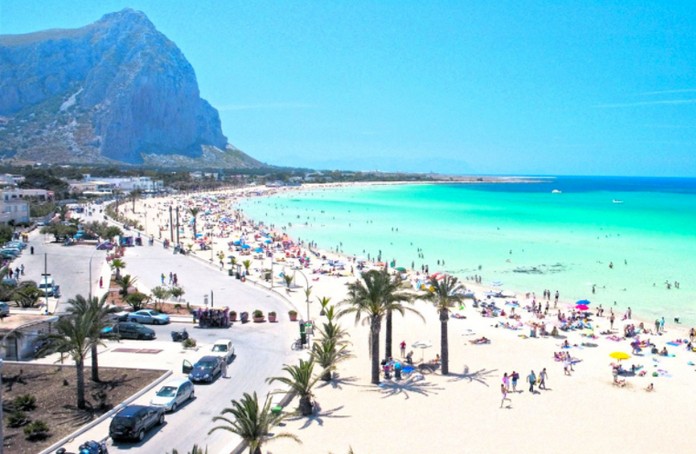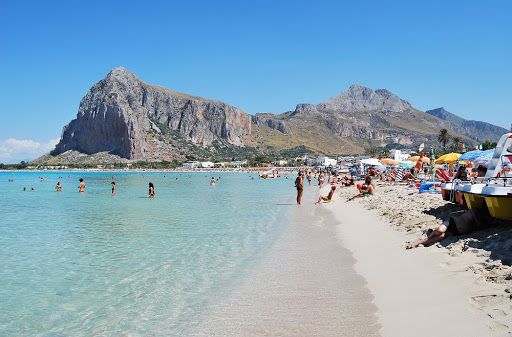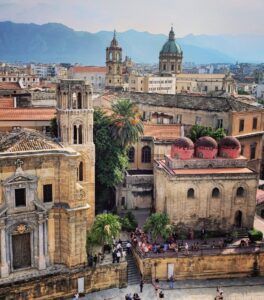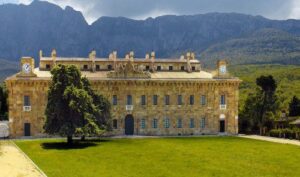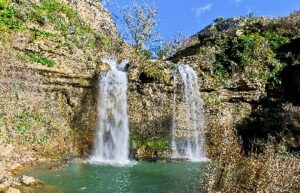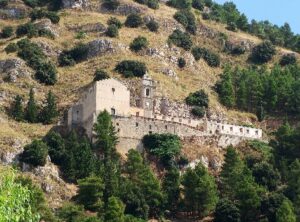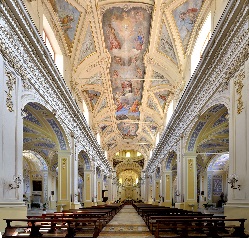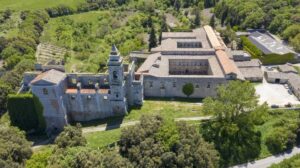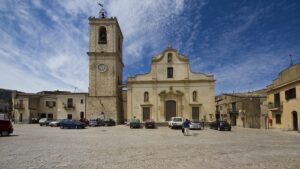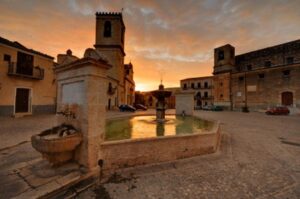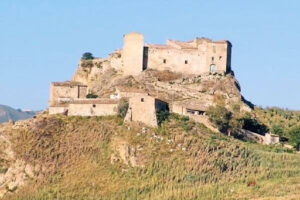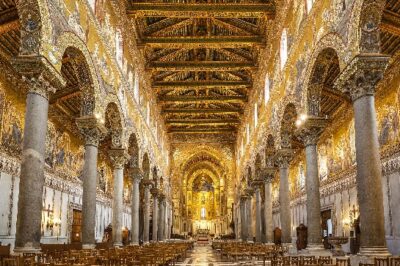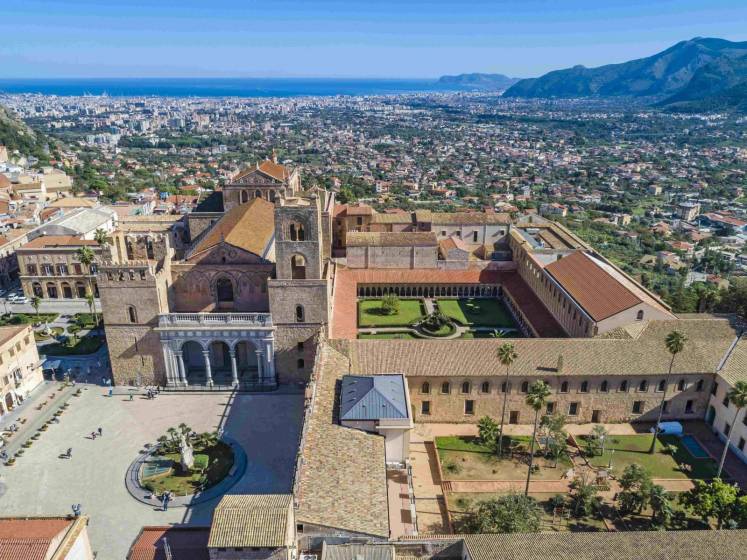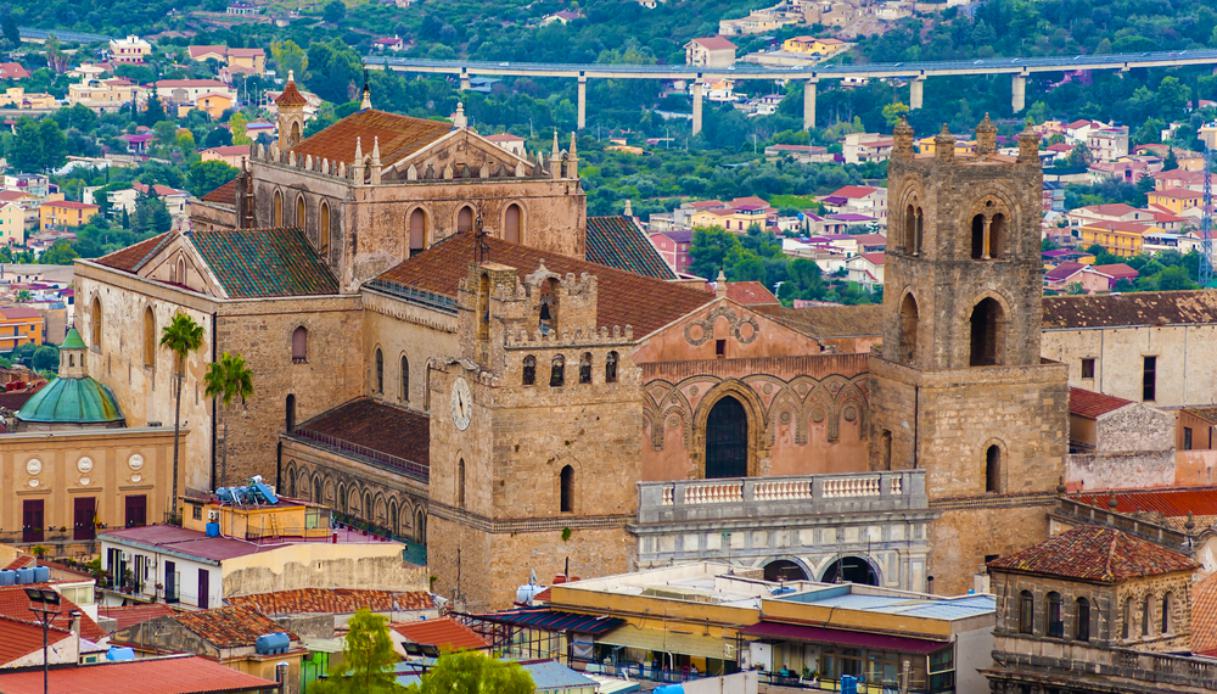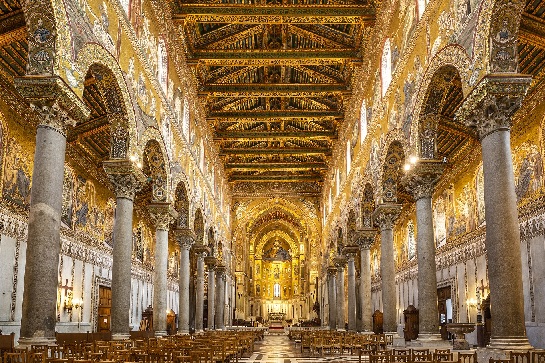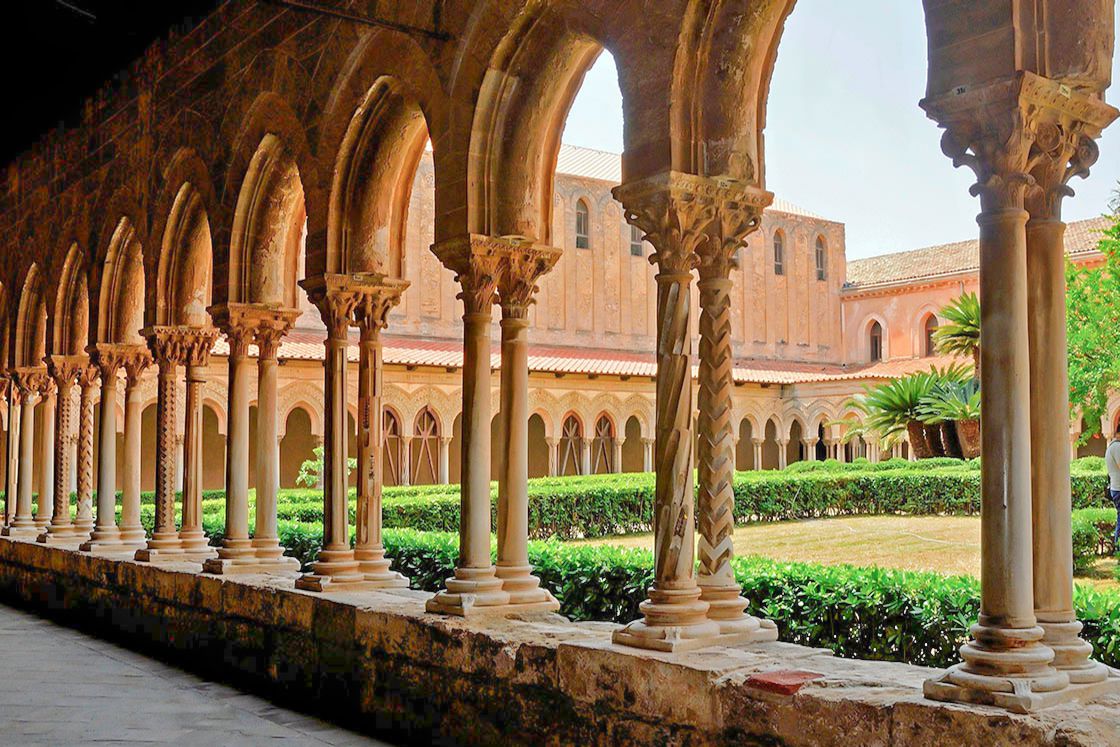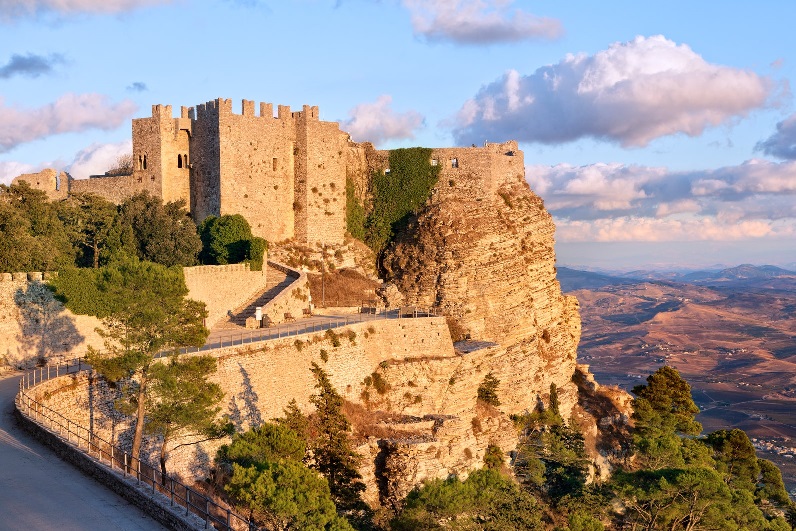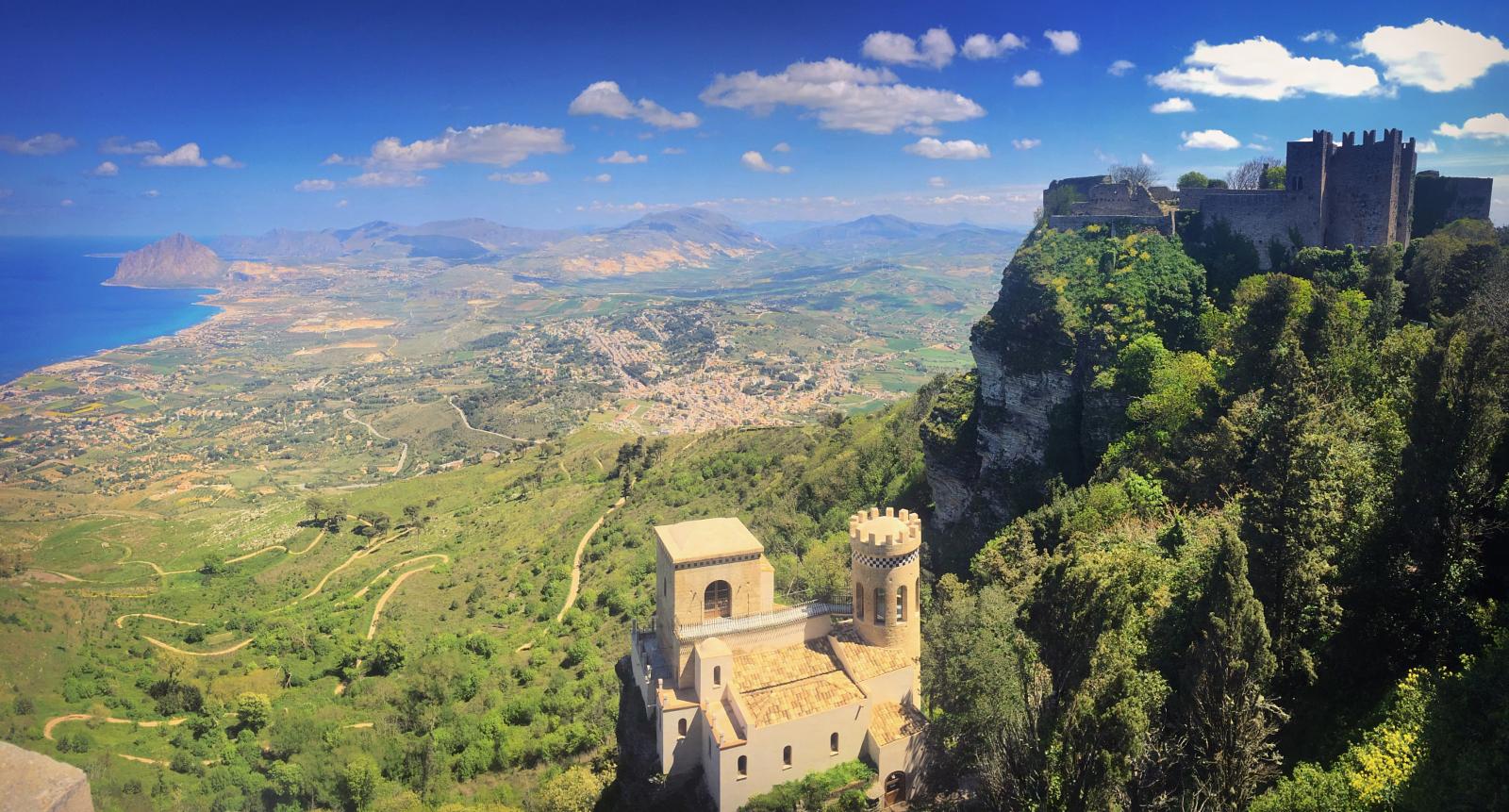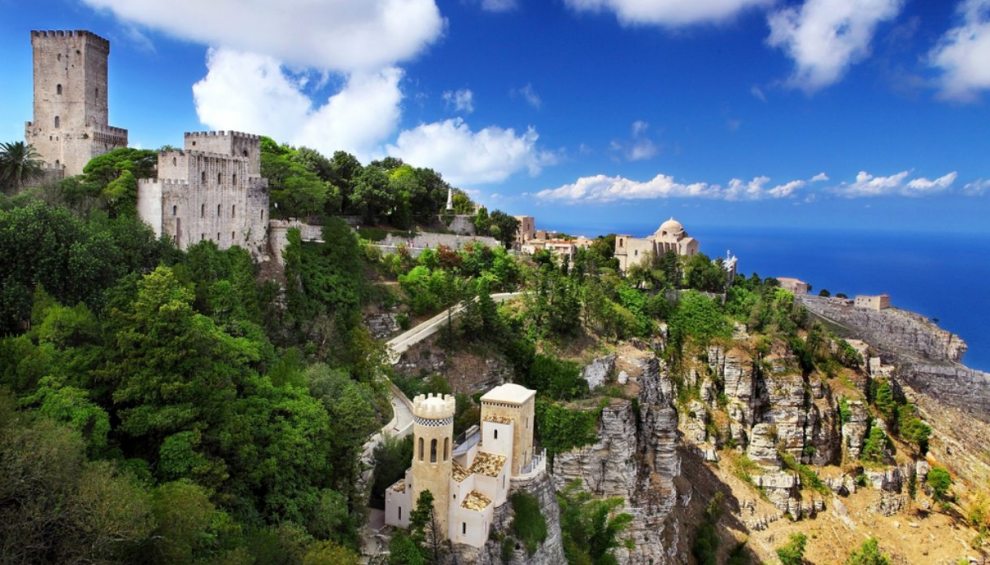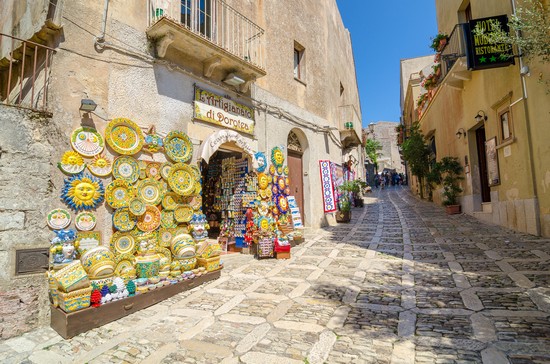From historic markets to lavish palaces, the charm of Sicily is truly unrivaled. Each region and city has its own unique stories and culture. As the largest city and the island’s capital, Palermo offers a special charm through its amalgamation of traditional cultures and its lively dynamics that are summed up in its markets.
Palermo’s ancient times and Arab influences
The city of Palermo has been a crossroads of empires throughout its history, each of which has left a unique imprint on the city’s culture and character. Greeks, Romans, Byzantines, Arabs, and Normans brought with them unique heritages that today are reflected in the architecture, cuisine, and traditions of the area or even just in the gestures or speech of the people of Palermo.
Founded in 734 B.C. by the Phoenicians as a trading center, it was under Roman rule that the city began to prosper as a crucial part of the empire’s grain supply; the city’s fertile land and strategic location contributed to its importance as a strategic grain resource.
Under Arab rule in the 9th century, Palermo experienced a true “golden age.” This positive turning point was characterized by economic prosperity, intellectual activities, and artistic innovation. The Arabs introduced highly advanced irrigation systems, new crops such as citrus fruits, and a distinctive and typical architectural style that still connotes Palermo today that blended Islamic, Byzantine, and Norman elements. This style is still visible today in the city’s mosaics, domes, and arches, particularly in landmarks such as the Palatine Chapel and the Zisa Castle.
The Arabs brought important innovations to Sicily and Palermo; significant were their contributions in the field of medicine, with the creation of hospitals and the introduction of new health treatments and remedies.
An imprint still visible today…Palermo’s markets, such as the world-famous Ballarò and Vucciria, echo the lively souks of North Africa, with vendors selling spices, olives, and sweets reminiscent of Middle Eastern bazaars.
Ballarò: the most antic and lively market
The Ballarò market in Palermo is a living icon of Sicilian tradition and culture; it has been a pulsating corner of daily life in Palermo for centuries and is still super active today. Located in the heart of the city’s historic center, Ballarò is renowned not only for its rich offering of any product and food but also for its deep connection to local history and traditions.
The roots of the Ballarò market go back to the time of the Arab occupation of Sicily, which as mentioned above, dates back to the 9th century. During this period, Palermo became a thriving commercial and cultural center, and the Ballarò market emerged as a focal point for the exchange of goods from different parts of the Mediterranean. The name “Ballarò” is commonly traced back to the Arabic word “balhar,” meaning “confusion” or “tumult,” evoking the image of a lively and chaotic place, a reflection of its characteristic and dynamic atmosphere.
As you stroll through the narrow market streets, you will find yourself immersed in a vibrant environment of scents, sounds, faces, ethnicities, languages, and accents–an explosion of sounds and colors. The incessant chatter of vendors offering their wares that reaches apex tones in the classic “barking” (shouting of the traders), the clatter of moving pots and pans, and the irresistible smells of street food create a unique sensory experience. Vendors are very often the real stars of the market; they are known for their enthusiasm and ability to engage passersby with their stories and offerings.
[Best_Wordpress_Gallery id=”299″ gal_title=”mercato storico palermo ballarò”]
Among the gastronomic specialties you will find, arancine (delicious stuffed, breaded and fried rice balls) (beware, in Palermo “are females,” sfincione (a typical Palermo rustic pizza filled with onions and anchovies) and panelle (typical chickpea fritters, the city’s true street food) are just some of the delicacies that enrich the culinary offerings. In addition, the market offers a wide range of the freshest fish dishes, homemade pasta, and other typical specialties that celebrate Sicily’s rich culinary tradition.
The eclectic variety of produce available at the Ballarò market is amazing. From fresh fruits and vegetables, often locally grown, to unique handicrafts, antiques modern antiques, and quaint souvenirs, the market is a haven for those seeking authenticity and originality. Each stall tells a story, and the ability to bargain directly with vendors adds an extra layer of involvement and interaction.
But Ballarò is much more than just a market: it is a stage for Palermo’s living culture; here, encounters between ethnicities, statuses, locals, and tourists are continuous allowing for the discovery of customs, traditions, and personal stories that enrich the visitor’s experience. Conversations with vendors and residents offer an authentic glimpse into daily life, far from the traditional tourist circuits.
The Ballarò market is an extraordinary place for photography enthusiasts…the vibrant atmosphere, the vibrant colors of the produce and stalls, and the murals that adorn the surrounding walls offer endless opportunities for memorable shots. Every corner of the market, with its vibrant scenes and unique details, is a perfect canvas for capturing the essence of Palermo and its vibrancy.
In summary, the Ballarò market is not just a destination for buying goods and food; it is a celebration of Palermo’s culture and history, an immersive experience that offers an authentic glimpse into Sicilian life and an unmissable opportunity for all the senses.
La Vucciria
It used to be one of the best known, but today it has abandoned its commercial identity and has become a crossroads for young people and tourists. Palermo’s Vucciria Market is a vibrant corner of Palermo life with a history rich in ancestors, familiar faces, and art. Founded in the 12th century, over the centuries, the Vucciria has witnessed many changes, reflecting the broader changes in Palermo itself. During the 19th and early 20th centuries, it was renowned for its vibrant atmosphere and the variety of its offerings, making it a must-visit place for anyone seeking an authentic taste of city life; hence, famous faces and celebrated artists also wanted to immortalize it as a symbol of the city. Today, despite the challenges it has faced, such as economic changes and urban redevelopment, the Vucciria has managed to retain its character and charm, adapting to modern times and opening up more and more to tourists.
You will find typical trattorias, benches, chairs, stools, street food, and why not real collective dance sessions in this epicenter of local culture.
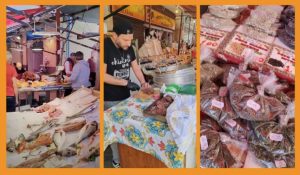
Capo Market
We are behind the Teatro Massimo, that’s where just past Porta Carini a 100 percent Palermo “world” opens up. Palermo’s Capo Market is both a historical and contemporary gem located in the heart of the Sicilian capital. Founded in the 10th century during Arab rule, this bustling market has been a cornerstone of Palermo’s culinary and cultural life for more than a millennium. Initially a trading center for local merchants and vendors, the Capo has evolved into a bustling market where tradition meets modernity, offering a fascinating glimpse into the rich heritage of the city and Sicily as a whole.
In recent years, the Mercato del Capo has undergone considerable development, balancing modernization with its historic charm. Efforts to preserve its traditional character and improve infrastructure have breathed new life into the market, attracting increasing numbers of visitors. Despite these changes, the Capo remains a beloved slice of Palermo’s past, where the essence of Sicilian culture and cuisine continues to thrive amid the bustling hustle and bustle of modern Palermo.
Today’s Capo is a feast for the senses; at times it is so packed with people that it is complex to walk through. The narrow, winding streets are lined with colorful stalls overflowing with fresh produce, aromatic spices, and delicious street food. From succulent seafood artfully cooked to freshly baked desserts, the market showcases Palermo’s diverse food scene: there are plenty of opportunities and ways to enjoy them, from hipster restaurants to makeshift stalls. Just as with the Ballarò market, the lively atmosphere is enhanced by the enthusiasm of the vendors and the rhythmic sounds of daily market life, making it a must-see for locals and tourists alike.
A word of advice? Between a pomegranate juice and a sarda a beccafico, don’t miss one of our favorite churches, the Immacolata Concezione al Capo–a real gem.
Borgo Vecchio Market
We are still in the heart of Palermo, this time behind the Politeama Theater…through alleys and narrow streets we enter one of Palermo’s most typical neighborhoods. The Borgo Vecchio market is a shining cross-section of Palermo life that has fascinated visitors for centuries. Originally founded in the 12th century, this bustling market has evolved from a modest trading post into a bustling hub full of flavor and 100 percent local character. Over the years, it has seen countless changes, reflecting the rich tapestry of Palermo’s history and culture.
Today, Il Borgo Vecchio is a sensory delight, where the aroma of fresh produce and the lively chatter of passersby, residents, and tourists fill the air. You’ll find everything from stalls to stores, to a la-page restaurant to super historic trattorias. Even this market less traveled by tourists offers a huge assortment of produce, from colorful fruits and vegetables to fragrant spices to street food for all tastes.
More than the previous Borgo Vecchio is a true community, you will often find concerts, events, and patron festivals in the market’s main square.
Palermo’s historic markets are true treasures of Sicilian culture and reflection of Palermo’s life. Ballarò, the Vucciria, the Capo, and the Borgo Vecchio offer a unique experience, full of colors, scents, and traditions that tell the story of the city. They cannot be missed in your travel plans, each market is a lively corner of authenticity where you can savor the true essence of Palermo.
